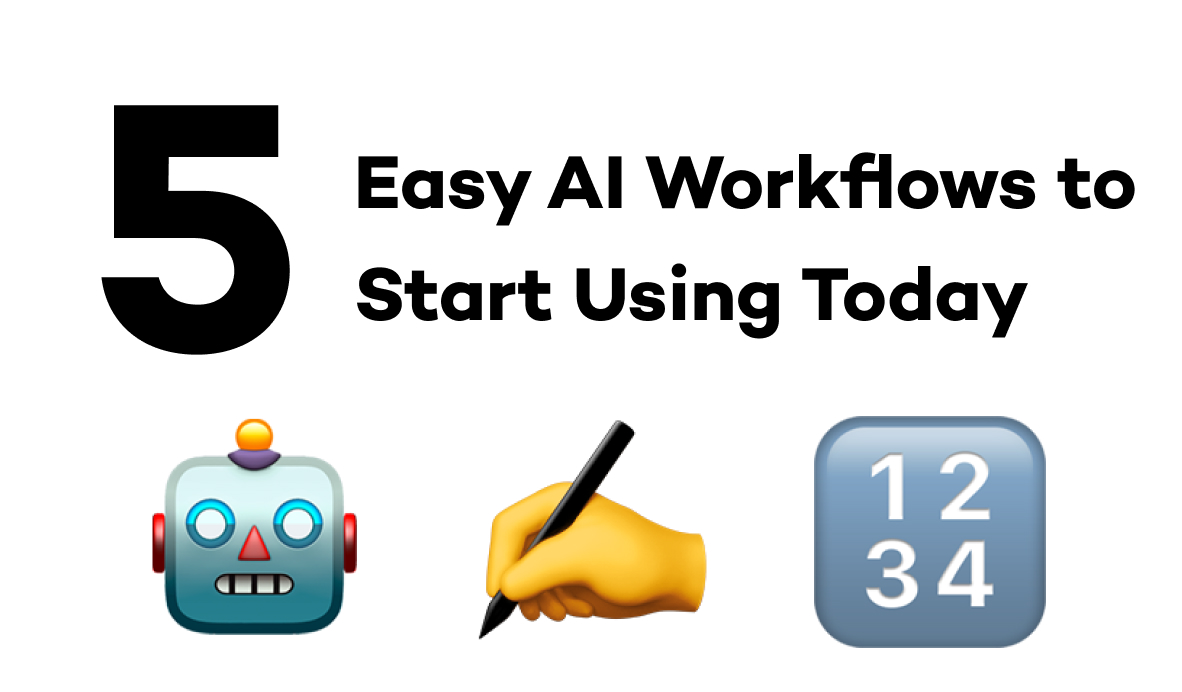Zapier AI Copilot: The Promise, Reality, and Future of Automation Shortcuts
Zapier's AI copilot lets you build automations with simple prompts. We gave it a test to see where it excels, and where it still falls short.
March 31, 2025

Imagine building powerful Zapier workflows with just a few sentences of plain English.
That's the promise of Zapier's AI copilot – a conversation-based shortcut to creating automations that could save you dozens of clicks.
But does it actually deliver? We've tested this new feature extensively to give you the inside scoop on what works, what doesn't, and how to use it effectively.
What is Zapier's AI copilot?
Zapier's AI copilot is a natural language assistant that transforms your written instructions into functioning automated workflows. Instead of manually selecting apps, actions, and configuring each step, you simply describe what you want in conversational language, and the copilot attempts to build it for you.

Located at the top of your Zap canvas whenever you create a new automation, this beta feature aims to streamline the Zap-building process, especially for those new to the platform or attempting to create workflows with unfamiliar apps.
The Good: What Zapier’s copilot gets right
In our testing, we found several areas where the copilot genuinely accelerates Zap creation. Here’s the prompt we used to test it out:
When a new Project record is added to a "Closed-won" view in Airtable, send an alert about it in Slack with a link to the record. Then create a new event in Google calendar with Project details. Use xraytutorials@gmail.com accounts for all three apps.
Rapid workflow sketching
The copilot excels at quickly outlining multi-step workflows. When we entered our prompt, it correctly identified all three necessary steps, which we were able to add to our automation with a single click.

This skeleton-building capability is perhaps the tool's strongest feature, allowing you to establish the basic structure of your Zap in seconds rather than minutes.
This might not save much time for Zaps with just 2 or 3 steps, but for longer automations, getting the basic elements in place with the copilot could speed up the process significantly.
Handling basic logic
We were pleasantly surprised to find that the copilot can successfully implement simple conditional logic. When we entered a follow-up prompt to "only continue to the Google Calendar step if the ‘Spec sheet’ attachment field isn't empty," it correctly added a filter step before the calendar action.

For users unfamiliar with Zapier's filter functionality and formatter steps, this alone could be worth using the copilot.
Limitations: Where Zapier’s copilot falls short
Despite its promising capabilities, Zapier's AI copilot isn't quite ready to build complete, production-ready workflows on its own.
Configuration inconsistencies
While the copilot can add the right steps, it struggles with correctly configuring them. In our test, it:
• Selected the wrong accounts despite specific instructions
• Created an invalid URL for an Airtable record
• Used invalid Slack message syntax to embed a URL in text

These issues required manual intervention to fix, somewhat diminishing the time-saving benefits.
Missing advanced features
The copilot has significant blind spots with more advanced Zapier features. Most notably, it cannot add paths to your Zaps – a critical limitation for complex workflows that need branching logic.
[can’t add paths]
When directly asked to add a path, the copilot responded with "Sorry, I could not get a result for Paths by Zapier." This means any workflow requiring conditional paths still requires traditional manual building.
How to use Zapier's AI copilot effectively
To get the most out of this tool in its current state, we recommend the following approach:
Keep prompts simple and app-focused
The copilot works best when you focus your prompts on the specific apps and actions you need, rather than detailed configuration instructions. For example:
Effective prompt: "When a new lead form is submitted in Typeform, add the contact to Mailchimp and send a notification in Slack."
Overly detailed prompt: "When form #12345 gets a submission with 'enterprise' in the company field, add them to the 'Enterprise Leads' tag in Mailchimp account XYZ, and send a Slack message to #sales-team with the company name and contact email."
In the end, the detailed prompt will still work, but it will likely result in more or less the same setup as the shorter prompt.
Use the copilot as a starting point
Think of the copilot as a way to quickly sketch your Zap's foundation, not as a complete solution. Let it:
• Select the correct apps
• Add the basic trigger and action steps
• Implement simple filters and formatter steps
Then manually review and adjust the configuration details yourself.
Double-check everything
Before testing or activating your Zap, verify:
• All accounts are correctly selected
• Dynamic fields are properly mapped
• Filters contain the correct logic
• Message formatting follows app-specific syntax requirements
Future improvements we'd like to see
For Zapier's AI copilot to become truly transformative, we believe several enhancements are needed:
1. Path support
The inability to create branching logic via paths severely limits the complexity of workflows the copilot can build. Adding this capability should be a top priority.
2. Better account handling
The copilot should respect account preferences specified in prompts and better handle situations with multiple connected accounts for the same app.
3. App-specific syntax knowledge
Understanding the unique formatting requirements of different platforms (like Slack's URL syntax) would eliminate many manual corrections.
4. Improved data mapping
Better recognition of available fields and more accurate mapping between steps would significantly reduce the need for manual configuration.
5. Multi-Zap workflow design
Eventually, we'd love to see the copilot become capable of designing multi-Zap systems that work together to solve complex business processes.
The Verdict: Useful but not yet revolutionary
Zapier's AI copilot represents a promising step toward more accessible automation building. In its current beta state, it's most valuable for:
• First-time Zapier users looking to understand how steps connect
• Experienced users who want to quickly outline new workflows
• Anyone implementing simple if/then conditions who might be unfamiliar with filters or formatter steps
However, it's not yet the automation game-changer it aspires to be. Every Zap created with the copilot will require some level of manual review and correction before it's ready for production use.
We'll be keeping a close eye on this feature as it develops. With the right improvements, Zapier's AI copilot could eventually transform how we all build automations – making the process faster, more intuitive, and accessible to a much wider audience.
Need expert help building your Zapier workflows? Our team of low-code engineers can help you implement the perfect solution during a collaborative call. Learn while you build, with progress guaranteed. Visit lowcodeengineers.com to book your first hour.



.jpg)


